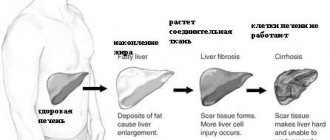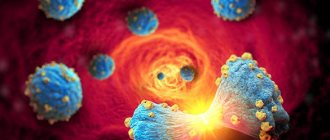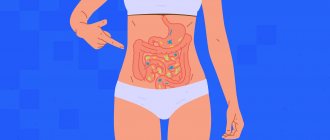Many therapists, cardiologists and endocrinologists call vegetative-vascular dystonia (synonym - neurocirculatory dystonia) the most common disease, which occurs in almost every second person. But in the International Classification of Diseases, the main document for doctors, there is no such diagnosis. You won’t find it in the records of doctors who work outside the CIS.
It turns out that there is no such disease. But many people experience very real symptoms of VSD. Where do they come from? And what to do if you have been diagnosed with VSD?
Why does vegetative-vascular dystonia (VSD) develop?
VSD is a pathological condition caused by increased excitability of the central nervous system (CNS). The fundamental factors in the occurrence of symptoms of autonomic dysfunction syndrome include hereditary disorders of the structure and functions of the nervous system and psychotraumatic factors, such as:
- chronic fatigue;
- stress, emotional overload;
- mental and physical stress;
- weather sensitivity.
However, symptoms of VSD can also be caused by the following reasons:
- previous neurological, endocrine and somatic diseases;
- allergy;
- abnormalities of body structure;
- unfavorable environmental conditions;
- climatic and meteorological conditions;
- physical inactivity;
- physiological hormonal changes;
- unbalanced diet and other factors.
Age-related characteristics play an important role in the occurrence of symptoms of VSD. Thus, in adolescence, the cause of unpleasant sensations is the uneven pace of development of individual organs and the parts of the autonomic nervous system that innervate them.
Thus, the symptoms of autonomic dysfunction are caused by changes in the activity of the sympathetic and parasympathetic systems. This, in turn, leads to excessive production of a number of biologically active substances and hormonal imbalance.
Diseases that are hidden under the diagnosis of VSD
What conclusions can be drawn from the previous block of the article?
Conclusion No. 1.
If you find yourself with the above symptoms, do not panic and consult a doctor in a timely manner. Because the disease will not disappear on its own, and you need to understand the reasons.
Conclusion No. 2.
Vegetative-vascular dystonia is a pseudo-diagnosis that hides a number of real diseases, which very often remain without proper treatment. Most often these are mental, neurological, endocrinological and cardiac disorders, which include:
- Anxiety and panic disorder
- Hypochondriacal disorder (this is worth paying attention to for patients who have been visiting doctors for years, taking tests and undergoing procedures that do not reveal any somatic diseases)
- Depression
- Migraine
- Hypo- and hyperthyroidism
- Hypertension
- Irritable bowel syndrome
- Cardiac ischemia
- Fibromyalgia (chronic pain syndrome)
- Asthma
Types of vegetative-vascular dystonia
Depending on which autonomic disorder predominates, VSD is conventionally divided into the following types:
- cardiac
– cardiac disorders; - hypotonic
– a functional disorder characterized by a decrease in blood pressure and a weakening of vascular tone; - hypertensive
– a syndrome manifested by high blood pressure; - vagotonic
– an autonomic disorder associated with disruption of the vagus nerve; - mixed
- combining two or more of the listed types.
What will help with the diagnosis of VSD
Have you passed all the necessary examinations and have not found any somatic diseases? In this case, we are talking about a neurotic condition that could develop as a result of stress or excessive fatigue of the body and psyche. In fact, you are healthy, but you need to stabilize your psyche and help yourself recover.
What methods would be appropriate
:
- Visiting a psychologist and psychiatrist to monitor dynamics
- Organized work and rest schedule
- Healthy sleep pattern - at least 7-8 hours
- A healthy diet that includes a large amount of vegetables and fruits, vegetable fats (oils, nuts), fish and seafood, cereals, lean meats, dairy products.
- Moderate sports activities - walking, yoga, stretching, exercise therapy
- Relaxation techniques - meditation, taking a warm bath with sea salt and aromatic oils
- Reduced overall stress levels
Symptoms of vegetative-vascular dystonia
The main symptoms of VSD depend on the functional state of the central and peripheral nervous systems, as well as the nature of autonomic disorders.
When VSD occurs with a disorder of the cardiovascular system, bursting, stabbing or aching pain appears in the heart area, an acceleration or deceleration of the heart rate, extrasystole (untimely contraction of the heart or its individual chambers), arrhythmia, and increased sweating are observed.
The list of symptoms of hypotonic VSD includes pallor of the skin, decreased blood pressure, weakness, chills, a feeling of lack of air, shallow breathing, and disruption of the digestive tract.
In disorders of the hypertensive type, the following manifestations of VSD are observed: frequent headaches, increased anxiety, an inexplicable feeling of fear, loss of appetite, nausea, impaired coordination of movements, a feeling of a veil or flashing spots before the eyes, excessive sweating.
People suffering from vagotonia experience decreased performance, increased fatigue and anxiety, apathy, sleep disturbances, and a tendency to develop depression. In addition, unpleasant sensations such as constant dizziness, causeless abdominal pain, night pain in the legs, intolerance to heat and cold, frequent urge to urinate, increased salivation, and constipation may occur.
Mixed type autonomic dysfunction is the most common form of VSD and is accompanied by signs characteristic of a variety of types of vegetative-vascular disorders. However, there are also specific symptoms of VSD that are unique to this condition: phobias, panic attacks, unreasonable fear of death, shortness of breath syndrome, chest pain, heart rhythm disturbances, drowsiness.
Due to the wide variety of manifestations of VSD, when choosing treatment tactics, specialists first of all pay attention to well-being and analyze complaints that make it possible to clarify the nature of the autonomic disorder.
When and how do signs of dystonia appear?
The tendency to autonomic dysfunction manifests itself in childhood. Children with hereditary dystonia sleep poorly, are often anxious and suffer from night terrors, they find it more difficult to adapt to new conditions and quickly get tired of physical and psychological stress. If such a child is created with favorable conditions in the family, hardened, and regularly added to the diet with vitamins and amino acids, ensure that he gets enough rest and walks in the fresh air every day, then autonomic regulation will be normalized as all systems develop and grow, and the symptoms of VSD in an adult age may not appear at all.
You can be convinced that poor health is a consequence of autonomic dysfunction after a full examination. Many symptoms of VSD are similar to disorders in other pathologies, and it is important not to miss a condition that can be life-threatening.
Manifestations of dystonia are not dangerous, even if you feel very unwell. But if you do nothing for a long time to return autonomic regulation to normal, then you risk losing your health in the future.
The first episodes of crises in VSD are usually associated with severe stress or an age-related crisis. In the future, any minor reason can cause a storm of somatic symptoms, which will not be easy to cope with.
Treatment of vegetative-vascular dystonia
Treatment of VSD is carried out in a complex, including drug therapy. Today, an effective drug that can act directly on the cause of vegetative-vascular disorders is Eltacin® .
This modern drug from the group of biological antioxidants contains three amino acids (glycine, glutamic acid and cystine). By interacting, they promote the production of glutathione. This compound, which is key in the body's antioxidant defense, normalizes the redox balance and improves the functional state of the autonomic nervous system.
What will not help with the diagnosis of VSD
Very often, after vegetative-vascular dystonia is diagnosed, the local therapist sends the patient to drink vitamins, nootropics, nicotinic acid and motherwort. But there are two dangers in this:
- The patient was not properly examined, and the real disease remained in the shadow of the symptoms of VSD.
- Vitamins, nootropics and mild sedatives often work as a placebo, relieving symptoms only for a while - 1-3 months, after which everything returns to normal.
Bibliography
- Diseases of the nervous system: A guide for doctors: In 2 volumes – T.1/ Ed. N.N.Yakhno
- Neurology. Handbook of a practicing physician. O.S.Levin, D.R.Shtulman
- Samosyuk NI, Samosyuk IZ, Fedorov SN, Chuhraeva EN, Zukow W. Vegetative-vascular dystonia: diagnosis and treatment with the inclusion of modern methods of physiotherapy. Journal of Education, Health and Sport. 2015;5(7):117-152
- I.N. ZAKHAROVA, Doctor of Medical Sciences, Professor, T.M. TVOROGOVA, Ph.D., I.I. PSHENICHNIKOVA. MODERN RECOMMENDATIONS FOR DIAGNOSIS AND TREATMENT OF VEGETATIVE DYSTONIA IN CHILDREN AND ADOLESCENTS. MEDICAL COUNCIL • No. 16, 2016
Expert advice
There is no need to be afraid of turning to “healers of the soul”, because the root of the problem of nausea with VSD, as well as other symptoms of this disease, lies precisely in emotional disturbances.
By putting your thoughts in order, you can achieve long-term remission. Yoga classes, communication with animals, and so-called animal-assisted therapy will be no less effective. A visit to the pool will also have a beneficial effect on the healing process. It is worth setting aside time for your favorite hobby. All of the above refers to non-drug treatment methods, but, nevertheless, they play a leading role in the fight against attacks of VSD, accompanied by vivid symptoms.
Have you experienced nausea with VSD? How did you fight her? We are waiting for your answers in the comments.
The most common causes of nausea
I think each of us has experienced nausea more than once in our lives.
Moreover, the older we get, the more pathological conditions accompanied by such an unpleasant and annoying symptom come our way. Unfortunately, most often these are far from harmless diseases. After all, even a banal food poisoning without proper medical intervention can lead to disastrous consequences. Therefore, I consider it appropriate to remind you of the main reasons for this condition before we talk about why you feel sick with VSD.
So, poisoning will rightfully take the leading place in the list of causes of nausea. Not necessarily food. These could be vapors of toxic substances or emissions from hazardous industries. Not less often, the above-described symptom occurs against the background of organic lesions of the gastrointestinal tract (gastritis, cholecystitis, pancreatitis), infectious (salmonellosis, dysentery) and parasitic (giardiasis, helminthiasis) diseases.
Nausea can occur both during physiological (for example, pregnancy) and pathological conditions: during hypertensive crises or cerebrovascular accidents in the vertebrobasilar system.
It is very important at this moment to pay attention to the accompanying manifestations of the disease - vomiting, diarrhea, dizziness, increased body temperature, that is, try to objectively assess your condition. You should remember: what did you eat the day before, were you near dangerous industries, is your blood pressure now elevated? This will help you and the doctor, even before carrying out special examination methods, to at least indirectly determine the cause of the observed nausea.
If your condition changes when the weather changes and weather sensitivity limits your actions, we recommend watching our video at the link below. Simple answers to complex questions on the Cardiograph channel!
How to get rid of symptoms
Of course, one of the most important points for the patient is the treatment of pathology. In this section we will look at how you can simply get rid of nausea during VSD.
Since the disease we are considering does not have an organic basis, in other words, there is no damage to any of the organs, then there is no single remedy for its treatment.
Usually, doctors resort to prescribing symptomatic therapy - the patient takes a drug to combat a particular manifestation of the pathology. For example, if it is an increased heart rate and increased blood pressure, use the beta blocker “Anaprilin”.
Cerucal, also known as Metoclopramide and Domperidone, will help quickly eliminate nausea.
But the main goal of treatment is still an attempt to prevent the development of repeated paroxysms of VSD. This will require communication with a psychologist or psychotherapist who can resolve the internal emotional problems that provoked the disease. It would also be useful to take sedatives (Afobazol, Persen, Adaptol), and sometimes antidepressants (Sertraline, Fluoxetine, Paroxetine).









